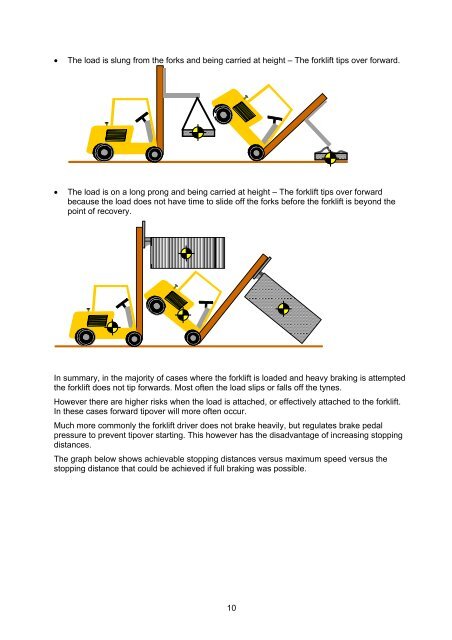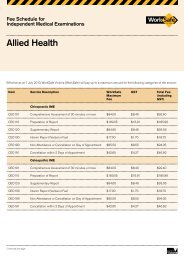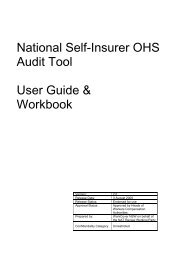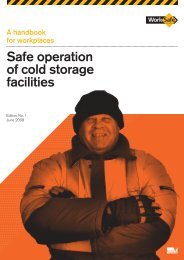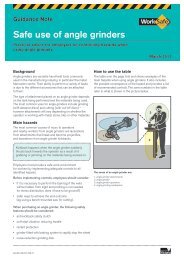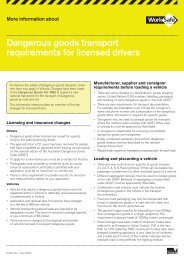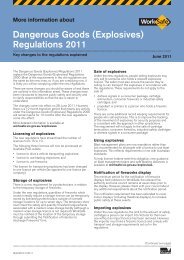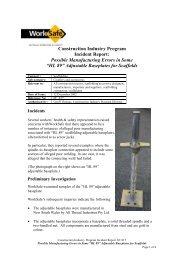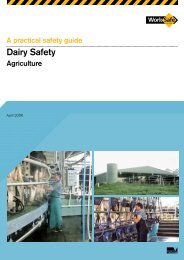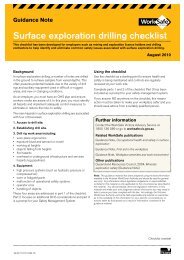Forklift stability and other technical safety issues - Monash University
Forklift stability and other technical safety issues - Monash University
Forklift stability and other technical safety issues - Monash University
Create successful ePaper yourself
Turn your PDF publications into a flip-book with our unique Google optimized e-Paper software.
• The load is slung from the forks <strong>and</strong> being carried at height – The forklift tips over forward.• The load is on a long prong <strong>and</strong> being carried at height – The forklift tips over forwardbecause the load does not have time to slide off the forks before the forklift is beyond thepoint of recovery.In summary, in the majority of cases where the forklift is loaded <strong>and</strong> heavy braking is attemptedthe forklift does not tip forwards. Most often the load slips or falls off the tynes.However there are higher risks when the load is attached, or effectively attached to the forklift.In these cases forward tipover will more often occur.Much more commonly the forklift driver does not brake heavily, but regulates brake pedalpressure to prevent tipover starting. This however has the disadvantage of increasing stoppingdistances.The graph below shows achievable stopping distances versus maximum speed versus thestopping distance that could be achieved if full braking was possible.10


